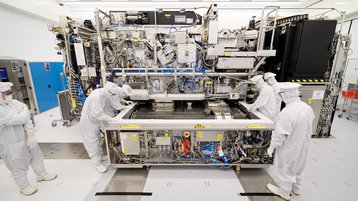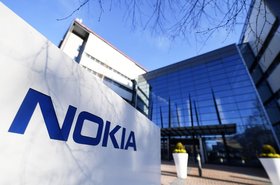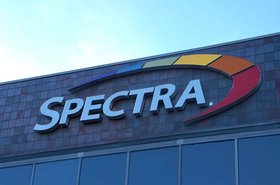ASML has surpassed its own chip density record with its High Numerical Aperture Extreme Ultraviolet (High NA EUV) machines.
According to a report from Tom’s Hardware, former ASML president Martin van den Brink told attendees of imec’s ITF World 2024 conference that the company has successfully printed 8nm dense lines with its pathfinding High-NA EUV machine, beating the 10mn dense line record ASML set in early April.
“Today we have made progress to the point that we are able to show record imaging down to 8nm being corrected over the full field, but also having some level of overlay,” Van den Brink said.
“This is not perfect data, by the way, but it is just to show you the progress. We are confident today that where we are with High-NA, that we will be able to cross this to the finish line in the coming time."
The record was set at the ASML and imec – a Belgium-based R&D organization – joint lab, housed at the company’s headquarters in Veldhoven, Netherlands.
ASML is the sole global supplier of extreme ultraviolet lithography photolithography machines that are needed to make the most advanced 3nm and 5nm chips. The company’s standard machines, which were first produced in 2013, have a 0.33NA (numerical aperture), while the High-NA machines have a 0.55NA.
The High NA EUV machine works by hitting droplets of tin heated to approximately 220,000 degrees Celsius (396,032 degrees Fahrenheit) with a laser to create 13.5nm light wavelengths, which do not naturally occur on Earth. This light is then reflected off a mask containing a template of the circuit pattern, and then through an optical system built with the most accurate mirrors ever fabricated.
Unlike traditional 0.33NA EUV, High NA EUV requires less light per exposure, reducing the time required to print each layer, and therefore increasing wafer output.
Earlier this month it was reported that Intel had secured all of ASML’s stock of High-NA EUV machines due to be manufactured in 2024, at a cost of approximately approximately $370 million per unit. The company received its first High NA EUV machine from ASML in January 2024, with assembly of the Oregon-housed machine completed in mid-April.
The TWINSCAN EXE:5000 is the first commercial lithography system of its kind and Intel has said it will use the machines to develop its 14A node.
ASML has also pledged €1.1 billion ($1.19bn) in private funding under the European Chips Act to support a pilot line to develop and test new components including sub-2nm chips hosted and led by imec.







